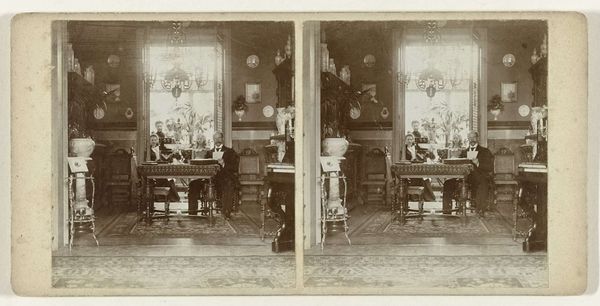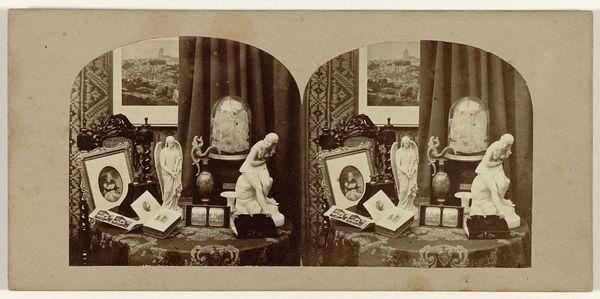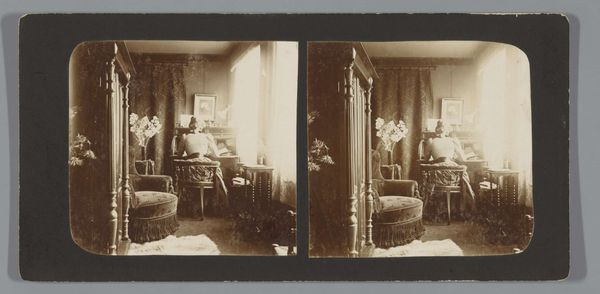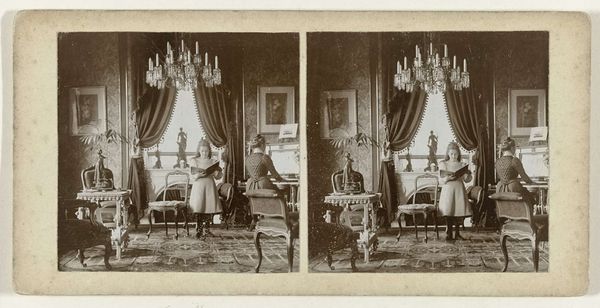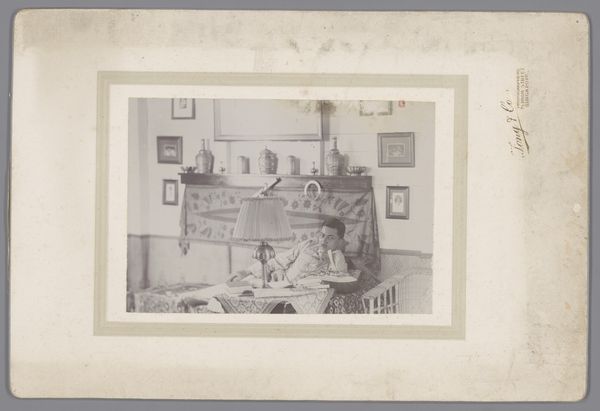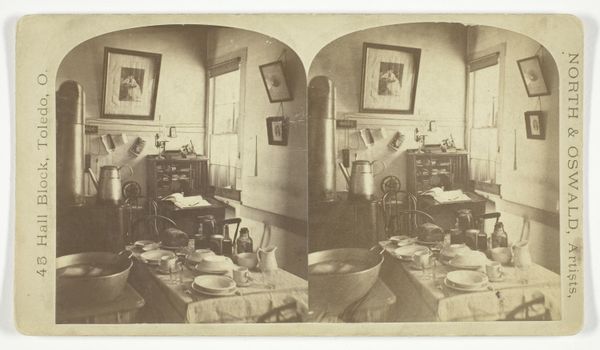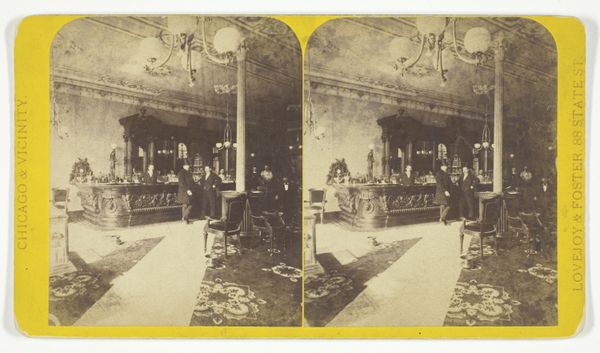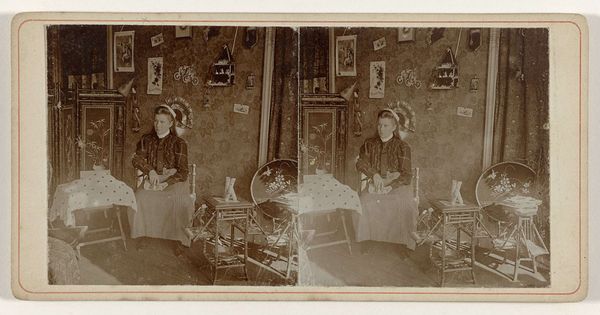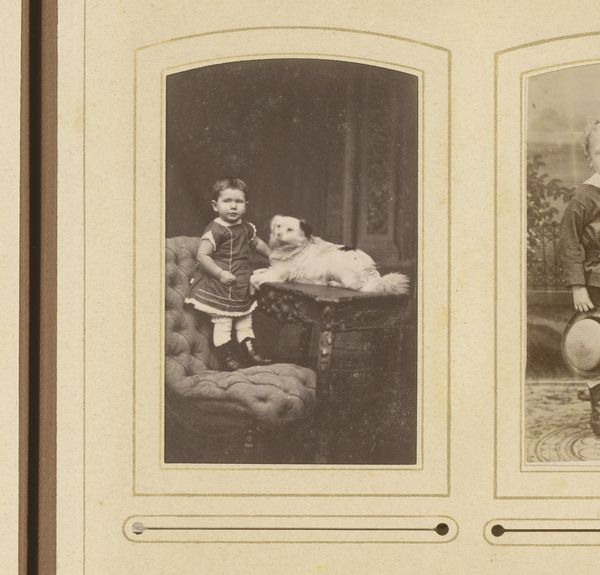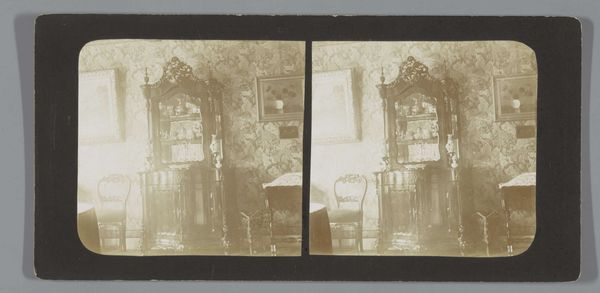
Kamerinterieur met stolpklok, beelden en lampen en (mogelijk) foto's Possibly 1861 - 1863
0:00
0:00
daguerreotype, photography
#
portrait
#
toned paper
#
daguerreotype
#
photography
#
19th century
Dimensions: height 84 mm, width 173 mm
Copyright: Rijks Museum: Open Domain
Curator: Check out this fascinating interior view! It’s a stereoscopic daguerreotype called "Kamerinterieur met stolpklok, beelden en lampen en (mogelijk) foto's", or "Room Interior with Clock, Statues and Lamps and (Possibly) Photographs." It comes to us from the London Stereoscopic Company, probably between 1861 and 1863. What strikes you right away about this unusual arrangement? Editor: An arranged chaos! It’s a tabletop still life, but amplified – an overabundance of symbolic objects fighting for attention. Makes me wonder what secret ritual this arrangement serves. There is a voyeuristic element, peeking in at some intimate tableau. Curator: Definitely! Notice how meticulously each item is positioned: the statuettes referencing classical forms, a mantel clock entombed in glass, framed photos. Even the backdrop, mimicking gothic windows overlooking a landscape, seems calculated. They are all cultural markers. This density points towards a fascination with interiority. The Victorians really began constructing environments that echoed, reflected and molded the person. Editor: Yes, like they’re building an exterior expression of their inner state! Is the melancholy suggested by all those figurines staged, too? And the theatrical lighting almost forces a specific emotional reading... Are we meant to feel a sort of domestic dread? Or maybe an artistic ennui? Curator: Or perhaps an active cultivation of these feelings? Victorians seemed drawn to sentimental allegories about memory, mortality, beauty, and decay. This photo captures an early effort to record a family's identity, a moment's distillation of personal tastes into something seemingly timeless. It reflects a time deeply occupied with self-representation. Editor: Timelessness captured with something that already feels antiquated. And this urge for memorializing oneself with a stage setup. Like it might not have existed if it wasn’t recorded in that moment. All of a sudden, all that melancholic figurine feels extra existential... Curator: Exactly! And this photograph has carried all these projected identities and significations across time. Editor: So what initially read to me as artificial sadness becomes poignant once we realize the subjects probably knew the image could one day communicate a profound absence, even their own. Curator: I completely agree, which makes you wonder: What symbolic interiority would we try to convey today? Editor: Perhaps our curated digital avatars speak loud enough. Thank you for this insightful conversation, its time I made an instapost of what i have seen.
Comments
No comments
Be the first to comment and join the conversation on the ultimate creative platform.
